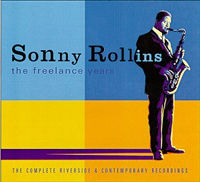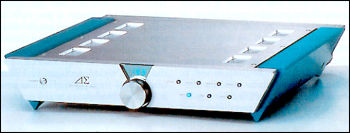LATEST ADDITIONS
What will happen to the SACD and DVD-Audio formats? Why?
Now that SACD and DVD-Audio players are available, it's time to hear your predictions for the new formats.
Napster Proclaims Legality of File-Swapping
Federal courts long ago established that music fans have certain "fair use" rights when it comes to making copies of recordings they own. They can transfer recordings from one format to another—such as from LP to cassette tape or from CD to MiniDisc—and they can share those recordings with others, provided that the results are only for private, noncommercial use.
Sony Announces Double-Density CD
For technophiles, DVD is the current hot ticket. The compact disc is far from dead, however. The 20-year-old format has been given a new lease on life by <A HREF="http://www.sony.com/">Sony Corporation</A>, which in early July announced the development of a new technique that will double the data-storage capacity of recordable CDs.
Mastering the Art of CD
E<I>ditor's Note: <A HREF="http://www.richardhess.com">Richard Hess</A> has recently spent time remastering several CDs and wrote about the experience for an engineering newsgroup. We think </I>Stereophile<I>'s online readers will find his comments about the process interesting.</I>
CD-Recorders, MiniDisc, and MP3 Running Neck, Neck, & Neck
Information released last week by <A HREF="http://www.intelectmt.com">NPD Intelect</A> reveals eye-opening statistics about digital audio recorder formats. The numbers show that, from January to May 2000, unit shares of digital recording sales in retail stores were 30.8% for CD recorders (not including computer-based systems), 40.9% for MiniDisc recorders, and 28.3% for MP3 recording devices (also not including computer-based systems).
Added to the Archives This Week
Kalman Rubinson had tried to get his hands on the <A HREF="http://www.stereophile.com//loudspeakerreviews/244/">Revel Performa F30 loudspeakers</A> back in January 1999, but was thwarted until later in the year, when J-10 decided to send them his way. Kal was clearly excited about these speakers, and explains in detail exactly why.
Mark Levinson No.383 integrated amplifier
When I learned that Madrigal Audio Labs was marketing their first integrated amplifier, the Mark Levinson No.383, I felt this was a big change for the Connecticut company. Mark Levinson literally started the high-end marketing revolution back in the early 1970s by manufacturing cost-no-object separate amplifiers and preamplifiers. The purist designs had one overriding rule: employ the simplest circuit path possible. Each amplifier or preamplifier used only individual circuit-board components (no integrated circuits) and had a minimal number of controls, eschewing elaborate switches and tone controls. Mark Levinson Audio Systems and its successor, Madrigal Audio Laboratories, has continued this philosophy of separate components for the past 25 years.
Recording of July 2000: Sonny Rollins: The Freelance Years
<B>SONNY ROLLINS: <I>The Freelance Years</I></B><BR> Sonny Rollins, tenor sax; Clark Terry, Kenny Dorham, trumpet; Jimmy Cleveland, trombone; Ernie Henry, alto sax; Thelonious Monk, Hank Jones, Sonny Clark, Wynton Kelly, Gil Coggins, Hampton Hawes, piano; Victor Feldman, vibes; Barney Kessel, Oscar Pettiford, Ray Brown, Paul Chambers, Wendell Marshall, Leroy Vinegar, bass; Max Roach, Shelly Manne, Roy Haynes, Kenny Dennis, drums; Abbey Lincoln, vocals<BR>Riverside 5RCD-4427-2 (5 CDs). 2000. Orrin Keepnews, Lester Koenig, Leonard Feather, original prods.; Eric Miller, compilation prod.; Dave Luke, tape transfers; Kirk Felton, remastering. AAD. TT: 5:58:42<BR> Performance <B>*****</B><BR> Sonics <B>*****</B>
Sharp SM-SX100 digital integrated amplifier
Why would a sharp mind offer a $15,000 integrated <I>digital</I> amplifier to a reviewer who has been characterized in the audio press as the "self-proclaimed Analog Messiah" and a "hyper-Luddite"? That's the first question a self-centered reviewer asks himself. Yours might be: "A $15,000 integrated amplifier from...<I>Sharp</I>?"



